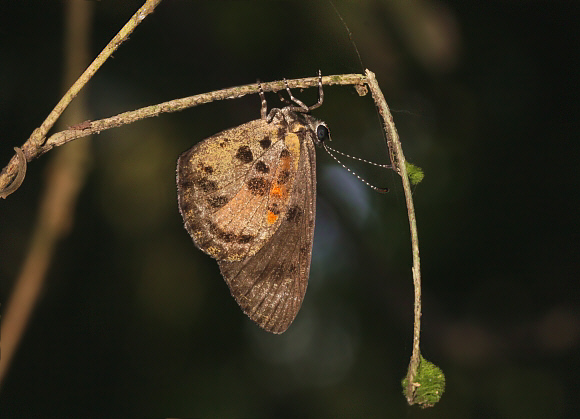
Introduction
The subfamily Lipteninae is wholly African in distribution, and comprises of no less than 600 species, varying from the tiny Eresiomera bicolor to the dazzling bright metallic blue Epitola posthumus – a species which with a wingspan of 65mm is massive by Lycaenidae standards.
The Lipteninae are fascinating because of their association with “ant trees”, i.e. trees which support colonies of Crematogaster ants. As with most other Lycaenidae species, the caterpillars of Liptenids have ants in almost constant attendance. The ants “milk” a sugary substance from a gland on the caterpillar’s back, and in return for this reward the caterpillar benefits because the presence of the aggressive ants deters other insects such as wasps and flies that would otherwise attack them.
Mimeresia comprises of about 15 species. The genus is unusual in that the genitalia of the males are identical in all species ( within most butterfly genera the genitalia differ greatly, and are used by taxonomists as species indicators ). The individual species however differ strongly in colour and pattern, and their status as full species is confirmed by DNA analysis.
The male of semirufa is very similar on the upperside to Eresiomera bicolor, being black, except for the upper half of the hindwing, which is bright orange-red. The female is a dirty yellowish colour, with broad blackish borders, and a black apex and costa. The under surface of the wings is heavily dusted with ochreous scales in both sexes.
Mimeresia semirufa is found only in Cote d’Ivoire and Ghana.
Habitats
This is a scarce and localised species, found in relatively undisturbed forests, at altitudes between about 100-400m.
Lifecycle
The caterpillars feed on blue-green algae growing on the bark of trees that have been colonised by Crematogaster ants, with which they are assumed to have a symbiotic relationship. The ants milk the larvae to obtain sugary secretions from a gland on their backs. In return, the presence of the ants is beneficial to the butterflies, providing them with a degree of protection from parasitoid wasps and from small predatory insects. The caterpillars of many Lycaenidae produce a “song” to appease their normally aggressive ant hosts, by stridulating chitinous areas of their bodies. It is likely that further studies will also reveal this to be the case with Liptenids.
Adult behaviour
The butterflies are rarely encountered during the daytime, when they probably spend most of their time flying around the upper branches of the “ant-trees”, or feeding at extrafloral nectaries. In late afternoon they go to roost hanging from thin dry twigs, usually about 2 metres above ground level.
